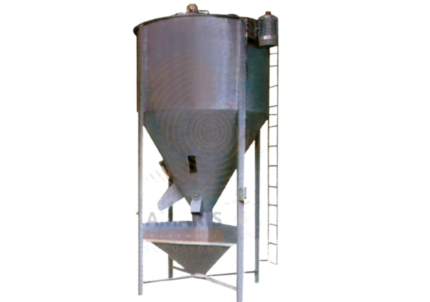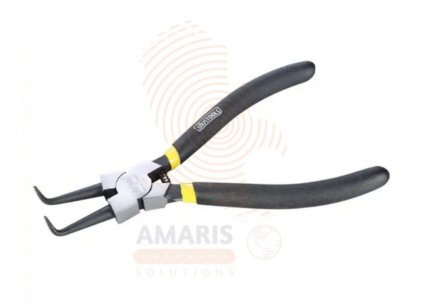Combination Feeler Gauge Set
$15.96 Original price was: $15.96.$15.16Current price is: $15.16.
A Combination Feeler Gauge Set is a precision measurement tool consisting of 32 individual metal blades or leaves, each of varying thickness. These blades are typically arranged in a compact set and are used to measure the clearance or gap between two objects. The set is designed to provide a range of thickness options, allowing users to select the appropriate blade for accurate measurements in applications such as engine valve clearances, spark plug gaps, and other tight tolerances. The combination aspect implies that the set includes a diverse range of thicknesses, offering versatility for various measurement needs. This tool is commonly utilized in automotive, engineering, and mechanical applications where precise measurements are crucial for proper functioning and performance.
Table of Contents
ToggleCombination Feeler Gauge Set
Uses
-
Engine Valve Clearance Adjustment:
-
Feeler gauges are often used to measure the clearance between engine valve stems and camshaft lobes. Adjusting valve clearances is crucial for maintaining proper engine performance and preventing damage.
-
-
Spark Plug Gap Checking:
-
Feeler gauges can be employed to check and adjust the gap between the center and ground electrodes of spark plugs in internal combustion engines.
-
-
Automotive Brake Adjustment:
-
Feeler gauges can help in checking and adjusting the clearance between brake pads and brake discs or drums, ensuring optimal braking performance.
-
-
Ignition System Maintenance:
-
Feeler gauges are useful for checking and adjusting the ignition point gaps in older automotive ignition systems with contact points.
-
-
Machinery and Equipment Calibration:
-
In various mechanical and industrial applications, feeler gauges are used for calibrating and setting clearances in machinery, ensuring proper functioning and efficiency.
-
-
Gasket Thickness Measurement:
-
Feeler gauges can be employed to measure the thickness of gaskets, ensuring proper sealing in automotive and industrial applications.
-
-
Electrical Contacts Inspection:
-
For electrical work, feeler gauges can be used to measure the gaps between electrical contacts, ensuring proper electrical conductivity and preventing short circuits.
-
-
Checking and Setting Tolerances:
-
Feeler gauges are useful for checking and setting tolerances in various mechanical components where precise clearances are essential for optimal performance.
-
-
Metalworking and Fabrication:
-
In metalworking and fabrication, feeler gauges can be used to measure gaps, clearances, and tolerances during the assembly and fitting of components.
-
-
General Measurement and Inspection:
-
Feeler gauges are versatile tools that find application in various industries for general measurement and inspection tasks, ensuring components meet specified tolerances and clearances.
-
Safety Precautions
-
Eye Protection:
-
Wear safety glasses or goggles to protect your eyes from any metal particles or debris that may be generated during the measurement process.
-
-
Hand Protection:
-
Consider wearing gloves to protect your hands, especially when working with sharp-edged feeler gauge blades or when handling tools in a potentially oily or greasy environment.
-
-
Proper Lighting:
-
Ensure that the work area is well-lit to clearly see the measurements and avoid any errors or mishandling of tools.
-
-
Stable Work Surface:
-
Use a stable and flat work surface to prevent accidents or slipping of tools. A stable surface also ensures accurate measurements.
-
-
Secure the Workpiece:
-
Securely clamp or hold the workpiece in place to prevent movement during measurements. This helps maintain accuracy and prevents injuries.
-
-
Correct Tool for the Job:
-
Use the correct size and type of feeler gauge blade for the specific measurement task. Using the wrong tool may result in inaccurate readings or potential damage.
-
-
Mind the Sharp Edges:
-
Be cautious of the sharp edges of the feeler gauge blades. Handle the blades carefully to avoid cuts or injuries.
-
-
Clean and Dry Conditions:
-
Ensure that the tools and workpieces are clean and dry. Oil or debris on the blades can affect measurements and may create slippery conditions.
-
-
Store Properly:
-
Store the feeler gauges in a protective case when not in use. This prevents damage to the blades and ensures they are readily available and organized for future use.
-
-
Follow Operating Instructions:
-
Adhere to the manufacturer's instructions and guidelines for using the feeler gauge set. This includes proper handling, storage, and any maintenance requirements.
-
-
Keep Tools in Good Condition:
-
Regularly inspect the feeler gauges for any signs of wear, damage, or deformation. Damaged tools may provide inaccurate measurements and can be unsafe to use.
-
-
Training and Familiarity:
-
Ensure that individuals using the feeler gauge set are properly trained and familiar with its operation. This reduces the risk of errors and promotes safe usage.
-


 Acrylic Sealants
Acrylic Sealants Construction Adhesives
Construction Adhesives Double-Sided Tape
Double-Sided Tape Duct Tape
Duct Tape Electrical Tape
Electrical Tape Epoxy & Resins
Epoxy & Resins Masking Tape
Masking Tape
 Automotive Wrenches & Socket Sets
Automotive Wrenches & Socket Sets Battery Chargers & Jump Starters
Battery Chargers & Jump Starters Car Jacks & Stands
Car Jacks & Stands Car Wash & Detailing Products
Car Wash & Detailing Products Diagnostic Tools
Diagnostic Tools Tire Inflators
Tire Inflators Vehicle Lighting
Vehicle Lighting Oil & Lubricants
Oil & Lubricants
 Adhesives & Sealants
Adhesives & Sealants Bricks & Blocks
Bricks & Blocks Cement & Concrete
Cement & Concrete Drywall & Plaster
Drywall & Plaster Flooring (Tiles, Wood, Laminate)
Flooring (Tiles, Wood, Laminate) Lumber & Plywood
Lumber & Plywood Paints, Primers & Coatings
Paints, Primers & Coatings Insulation Materials
Insulation Materials Roofing Materials
Roofing Materials
 Circuit Breakers
Circuit Breakers Electrical Cables & Wires
Electrical Cables & Wires Switches & Sockets
Switches & Sockets Fuses & Relays
Fuses & Relays Connectors & Terminals
Connectors & Terminals Electrical Boxes & Panels
Electrical Boxes & Panels Conduit & Fittings
Conduit & Fittings Lighting Fixtures & Bulbs
Lighting Fixtures & Bulbs Extension Cords & Power Strips
Extension Cords & Power Strips
 Anchors
Anchors Bolts
Bolts Clips & Clamps
Clips & Clamps Screws
Screws Nuts
Nuts Washers
Washers Rivets
Rivets Nails
Nails Threaded Rods
Threaded Rods
 Hammers
Hammers Measuring Tools (Tapes, Levels, Calipers)
Measuring Tools (Tapes, Levels, Calipers) Screwdrivers
Screwdrivers Pliers & Cutters
Pliers & Cutters Saws & Blades
Saws & Blades Chisels & Punches
Chisels & Punches Allen Keys & Hex Keys
Allen Keys & Hex Keys Ratchets & Socket Sets
Ratchets & Socket Sets Wrenches & Spanners
Wrenches & Spanners
 Power Tool Accessories (Blades, Bits, Discs)
Power Tool Accessories (Blades, Bits, Discs) Rotary Tools
Rotary Tools Saws (Circular, Jigsaw, Reciprocating)
Saws (Circular, Jigsaw, Reciprocating) Drills & Drivers
Drills & Drivers Grinders & Sanders
Grinders & Sanders Heat Guns
Heat Guns Nail Guns
Nail Guns Impact Wrenches
Impact Wrenches Batteries & Chargers
Batteries & Chargers
 Pipes & Fittings (PVC, Copper, PEX)
Pipes & Fittings (PVC, Copper, PEX) Plumbing Tools
Plumbing Tools Pumps & Motors
Pumps & Motors Sealants & Adhesives for Plumbing
Sealants & Adhesives for Plumbing Valves & Taps
Valves & Taps Water Heaters
Water Heaters Drainage Systems
Drainage Systems Faucets & Fixtures
Faucets & Fixtures Hoses & Tubing
Hoses & Tubing
 Hinges & Latches
Hinges & Latches Hooks & Brackets
Hooks & Brackets Window Hardware
Window Hardware Chains & Cables
Chains & Cables Casters & Wheels
Casters & Wheels Shelving & Storage Systems
Shelving & Storage Systems Door Handles & Locks
Door Handles & Locks Drawer Slides & Cabinet Hardware
Drawer Slides & Cabinet Hardware
 Personal Protective Equipment (PPE)
Personal Protective Equipment (PPE) Respirators & Masks
Respirators & Masks Safety Glasses
Safety Glasses Safes
Safes Security Cameras
Security Cameras Gloves
Gloves Helmets
Helmets Ear Protection
Ear Protection Fire Safety Equipment
Fire Safety Equipment Locks & Padlocks
Locks & Padlocks Motion Sensors & Alarms
Motion Sensors & Alarms
 Garden Fencing
Garden Fencing Garden Furniture Hardware
Garden Furniture Hardware Lawn Mowers
Lawn Mowers Trimmers & Edgers
Trimmers & Edgers Shovels & Spades
Shovels & Spades Rakes & Hoes
Rakes & Hoes Pruning Shears & Loppers
Pruning Shears & Loppers Watering Systems (Hoses, Sprinklers, Nozzles)
Watering Systems (Hoses, Sprinklers, Nozzles)
 Interior Paints
Interior Paints Paint Brushes & Rollers
Paint Brushes & Rollers Paint Strippers & Thinners
Paint Strippers & Thinners Paint Trays & Accessories
Paint Trays & Accessories Exterior Paints
Exterior Paints Spray Paints
Spray Paints Primers & Undercoats
Primers & Undercoats Varnishes & Stains
Varnishes & Stains
 Gaskets & Seals
Gaskets & Seals Hydraulic Fittings
Hydraulic Fittings Industrial Fasteners
Industrial Fasteners Industrial Hoses
Industrial Hoses Lubricants & Greases
Lubricants & Greases Metal Sheets & Bars
Metal Sheets & Bars Bearings & Bushings
Bearings & Bushings Belts & Pulleys
Belts & Pulleys
 HVAC Filters
HVAC Filters Insulation for HVAC
Insulation for HVAC Air Conditioners
Air Conditioners Refrigerants
Refrigerants Ventilation Ducts & Fittings
Ventilation Ducts & Fittings Thermostats & Controllers
Thermostats & Controllers Fans & Blowers
Fans & Blowers
 Pegboards & Hooks
Pegboards & Hooks Shelving Units
Shelving Units Storage Bins & Containers
Storage Bins & Containers Toolboxes & Tool Chests
Toolboxes & Tool Chests Workbenches
Workbenches Drawer Organizers
Drawer Organizers Labeling Supplies
Labeling Supplies
 Welding Accessories (Clamps, Brushes)
Welding Accessories (Clamps, Brushes) Welding Electrodes & Rods
Welding Electrodes & Rods Welding Helmets & Gloves
Welding Helmets & Gloves Welding Machines
Welding Machines Soldering Irons & Stations
Soldering Irons & Stations Flux & Solder Wire
Flux & Solder Wire
 Generator Accessories
Generator Accessories Inverters
Inverters Portable Generators
Portable Generators Power Inverters
Power Inverters Transfer Switches
Transfer Switches Diesel & Gasoline Generators
Diesel & Gasoline Generators
 Transport Equipment: Carts, Dollies, and Hand Trucks
Transport Equipment: Carts, Dollies, and Hand Trucks Storage Solutions: Pallets, Racks, and Containers
Storage Solutions: Pallets, Racks, and Containers Lifting Equipment: Hoists, Cranes, and Jacks
Lifting Equipment: Hoists, Cranes, and Jacks Conveyors and Accessories: Belts and Rollers
Conveyors and Accessories: Belts and Rollers











